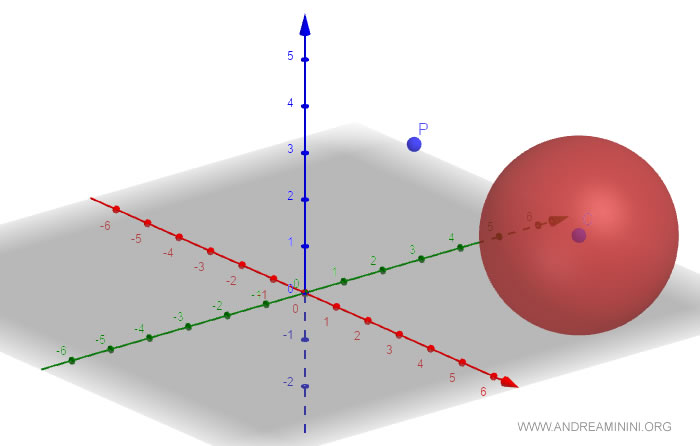Points Inside and Outside the Sphere
In relation to the sphere, points can be classified as follows:
- Internal points if the distance from point P to the center C of the sphere is less than the radius r. $$ d(C,P) < r $$
- External points if the distance from point P to the center C of the sphere is greater than the radius r. $$ d(C,P) > r $$
A Practical Example
Let’s consider a sphere with its center at coordinates (x, y, z) in space and a radius of two.
$$ C = \begin{pmatrix} 5 \\ 3 \\ 2 \end{pmatrix} $$
$$ r = 2 $$
Now, let’s take a point P in space with the following coordinates:
$$ P = \begin{pmatrix} 1 \\ 2 \\ 3 \end{pmatrix} $$
We need to determine whether this point is inside or outside the sphere.
To do this, we calculate the distance between the two points, CP.
$$ ||\overrightarrow{CP}|| = \sqrt{(5-1)^2+(3-2)^2+(2-3)^2} $$
$$ ||\overrightarrow{CP}|| = \sqrt{(4)^2+(1)^2+(1)^2} $$
$$ ||\overrightarrow{CP}|| = \sqrt{18} \approx 4.24 $$
The distance between points C and P is approximately 4.24, which is greater than the radius of the sphere, r=2.
$$ d(C,P)=4.24 > r = 2 $$
Thus, point P lies outside the sphere.

And that’s how it works.
